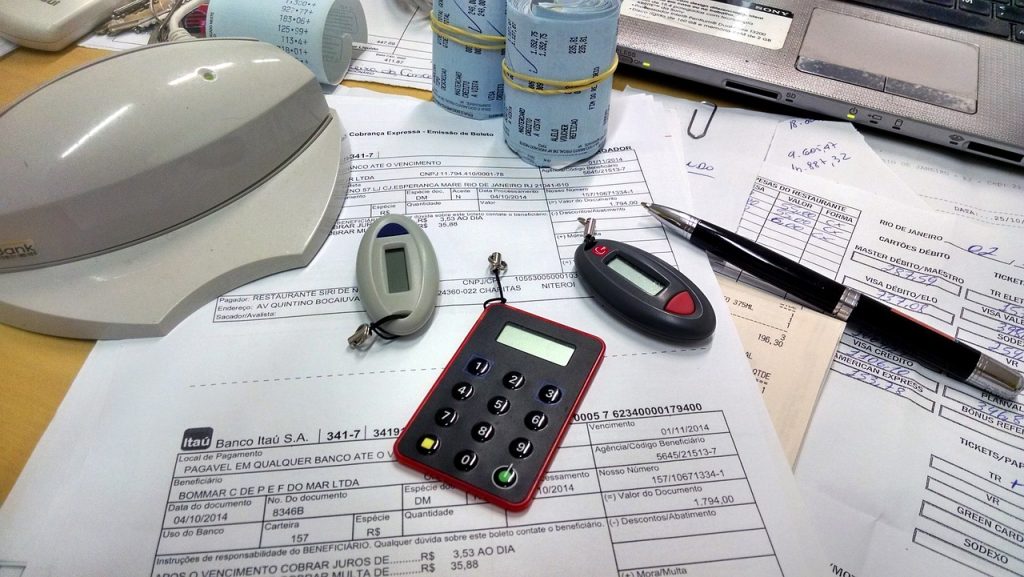
Debt Service Coverage Ratio: What is the DSCR Formula?
What is the DSCR ratio formula?
If you’re unsure, don’t sweat it. Everything you’ll need to know about the DSCR formula is listed in this comprehensive guide.
Keep reading to find out what the DSCR means, how to calculate DSCR in Excel, how to calculate DSCR for a term loan, and much more. There’s even a debt service ratio calculator to simplify the process for you.
Don’t miss out!
What is the debt service coverage ratio (DSCR)?
The debt service coverage ratio, or DSCR for short, is a ratio that is used to determine the amount of money that your business can afford to put towards paying off debt. There are more complex ways to write the equation, but the basic outline is ‘net operating income’ divided by ‘total debt service’.
DSCR Formula = Net Operating Income / Total Debt Service

Loan providers often use the DSCR formula as one of many ways to assess a borrower’s creditworthiness. If a small business owner’s debt service coverage ratio falls below 1 that means their cash flow is already in the negative. Lenders are cautious when considering loan applications with a negative debt service coverage ratio, but it won’t necessarily be a deal-breaker if the business shows other strengths.
Debt service coverage ratio terms
Before diving further into how to calculate DSCR, take a glance at this small glossary of related terms which will make it easier to understand what exactly the debt service coverage ratio represents.
What is the DSCR formula made up of?
- Net Operating Income – the difference between a business’s revenue and its certain operating expenses
- Total Debt Service – the overall debt obligations that a business possesses
- Revenue – income generated from a business’s sales
- Certain Operating Expenses (COE) – expenses that are incurred through normal business activities such as rent, wages, utilities, etc.
With the key terms broken down to their more basic elements, it should now be clearer what we’re talking about when we’re discussing the debt service coverage ratio. Now we can take a closer look at how DSCR is calculated and why it’s a part of applying for a business loan.
What is the Formula for DSCR?
The DSCR formula is not such a complicated one, but the size of the values that are typically entered into the equation can make it difficult. Fortunately, in our current ‘digital age’, technology makes it so much easier to run equations with big numbers.
You can put down the pocket calculator, we’re not talking about manually crunching numbers!
Taking a few minutes to learn how to calculate DSCR on Excel will be a huge help for you since you’ll be able to go back and use whenever you want at the click of a mouse.
Learning how to calculate DSCR on Excel is easy – just follow these 3 basic steps:
- Select and title two cells (A2 and A3, for example) ‘Net Operating Income’ and ‘Total Debt Service’
- Next to those two cells, select another two (B2 and B3, for example) where you’ll then enter the respective values
- In another cell, insert the DSCR formula which uses cells B2 and B3 as opposed to specific values
While this equation isn’t so complicated, it’s still best to design a debt service ratio calculator in an Excel sheet that allows values to be plugged-in. Formulating it according to the steps above will allow you to revisit that Excel sheet and use it many times, even if the values for ‘Net Operating Income’ and ‘Total Debt Service’ have changed (which they naturally will over time).
You can also make use of this ready-to-go DSCR calculator:
DSCR formula example
To illustrate how the DSCR formula works, we can use an example. Let’s say there’s an owner of a trucking business who wants to take a commercial vehicle loan from an online lender such as Become. Before approving the business owner for the financing, the loan provider will use the debt service coverage ratio formula to assess their reliability as a borrower.
When filling out the business loan application, the trucking business owner lists their net operating income as $95,000 annually. The loan provider then gathers that the business owner’s total debt service is $24,000 per year. Given those values, the DSCR would equal 3.96, which essentially means that the business owner would have enough money to repay their debt nearly four times in a year.

Note: the type of business you have will affect the type of industry loans a business needs, as well as the specific circumstances that that business finds itself in. Be sure to weigh your options carefully when choosing the right funding solution for your business.
Common DSCR calculation mistakes
The most common mistakes that people make when calculating DSCR have less to do with the way that the DSCR formula works (which is fairly simple), and have more to do with accurately calculating the variables that are being plugged into the DSCR formula.
In plain words, a miscalculation of the Net Operating Income or Total Debt Service will have an impact on the resulting DSCR, and that can be problematic. Let’s discuss how.
Common DSCR Mistake #1: Overlooking Current Debt
One of the frequent miscalculations that small business owners make when using the DSCR formula is forgetting to include their existing debt as part of the Total Debt Service. The reason it’s so common is that the business owner is focused on whether or not they’ll be able to repay the particular loan that they’re applying for, and they may forget that the Net Operating Income is used to pay back all debts (not only new debts).
Common DSCR Mistake #2: Overlooking Certain Types of Debt
Where the first mistake is forgetting that existing debts need to be included in the calculation, the second mistake is forgetting to include every type of existing debt.
[bctt tweet=”Since there are so many forms of debt that a #business owner may have, it’s crucial to keep an accurate list to use the debt service coverage ratio correctly.” username=”Become_co”]
Examples of types of debt to include in DSCR formula:
- Commercial vehicle loans
- Credit Cards
- Equipment financing
- Invoice factoring
- Business lines of credit
- Leases
- SBA loans
- Etc.
Avoid these mistakes by regularly reviewing your expenses and keeping close track of them. An error here and there can add up and make your DSCR appear unstable, which may raise doubts from lenders.
Interest coverage ratio vs. DSCR
Two formulas that are used to assess a business’s financial strength and creditworthiness: the interest coverage ratio and the debt service coverage ratio. Though both tools are used to compare a business’s debt levels with its ability to repay those debts within a given period, there is a difference that sets the two formulas apart.
The interest coverage ratio is used to measure a business’s net operating income (also referred to as EBIT or equity) in comparison to the total amount of interest that it needs to pay in the same period. The interest coverage ratio looks very similar to the DSCR formula – see below.

The debt service coverage ratio encompasses a bit more into the formula. Instead of only measuring how well a business will be able to handle paying off interest, the DSCR formula measures how well a business will be able to pay off the principal along with interest within a given period.
It may seem like only a slight difference, but by including the principal amount of debt the DSCR formula provides a more comprehensive assessment of a business’s financial wellness and reliability as a borrower.
The bottom line: For either formula, a ratio of less than 1 indicates that the business is unable to pay its minimum debt expenses. With a ratio of .85, for example, even a relatively small drop in revenue can put a business under real pressure to meet normal operating expenses – let alone repayments on a loan.
What does the debt service coverage ratio tell you?
The way that DSCR is applied differs depending on the sector in which it’s being used. The three main sectors that utilize the debt service coverage ratio are corporate finance, personal finance, and commercial real estate finance. In each sector, the DSCR refers to something slightly different.
1. DSCR in corporate finance
In the area of corporate finance, the debt service coverage ratio is used to measure how much money a business can afford to put towards paying its principal amount of debt along with the interest.
2. DSCR in personal finance
When considering whether or not to approve a personal loan application, banks will use the debt service coverage ratio to assess an individual’s debt servicing ability.
3. DSCR in commercial real estate finance
The real estate finance sector uses the debt service coverage ratio as a way to measure whether or not a property can repay its debt in comparison to the cash flowing into said property.
Wondering why the DSCR formula is important? You need only look back at the Great Recession of 2008. In the early 2000s, aggressive banking practices resulted in real estate financing being provided to subprime borrowers who had weaker DSCRs.
Lending money to people or businesses who will have a difficult time repaying the loan is a risky lending tactic which led the United States into the worst financial crisis since the Great Depression. When those subprime borrowers defaulted on their loans, it created a domino effect that may have been avoided if banks had not been lending to people with low debt service coverage ratios.

What DSCR do you need to qualify for business loans?
There’s no universal minimum DSCR that a business will need to qualify for financing – in fact, not every lender will consider your DSCR. That said, there are general rules that most lending institutions will keep in mind when assessing business loan applications.
- DSCR less than 1: Indicates a business has negative cash flow, and the inability to service all of its debt given its current income
- DSCR equal to 1: Indicates that a business has exactly enough income to pay its debt, but lacks the security that a higher DSCR provides
- DSCR more than 1: Indicates that a business is financially stable enough to comfortably pay off its debt without placing a strain on its ability to maintain normal operation
In plain language, the higher your DSCR, the more money you have to put towards repaying your debt. Likewise, the higher your DSCR, the better you’ll appear to lenders in terms of your trustworthiness as a borrower.
Depending on the loan provider, the type of business loan you apply for, and many other factors, small businesses can qualify for funding even if their debt service coverage ratio is lower than 1. If your business loan application has other strong factors, such as a strong credit score or plenty of assets to use as security, you may be able to make up for a weak DSCR.
How to improve your DSCR?
The ways to improve your DSCR are fairly simple – you can raise your revenues and/or decrease your operating expenses. Essentially, you want to increase the value on the top part of the formula and lower the value for the bottom part of the equation. Here are a few examples of how to make that happen.
Ways to improve revenue:
- Raise costs for your services or products
- Get better terms from suppliers
- Increase the number of incoming customers (with social media marketing, for example)
- Push larger transactions sizes
Ways to reduce operating expenses:
- Combine roles and reduce staff size
- Go green with your small business
- Make use of new technology (in retail, manufacturing, restaurants, etc.)
- Allow employees to work from home
It’s important to note that your debt service coverage ratio is going to come into play not only when you apply for a business loan, but also throughout the repayment period. Even after you get the business loan you needed to scale up your business, lenders will occasionally assess your DSCR so that they can make sure you abide by the loan terms. That’s why every business owner should learn how to calculate DSCR for a term loan.
You should check on your own debt service coverage ratio from time to time to ensure that you’re in good standing either with current loan providers that you’re paying back or with lenders who you may want to apply with in the future.
Closing words
At this point, you’ve got a solid answer to the question “What is DSCR ratio formula?” There’s a lot to know about what the DSCR formula is good for, how DSCR is calculated, and so on. You’ve even been given a debt service ratio calculator to make the task that much easier – be sure to use it! Monitor your DSCR on a normal basis so that you can stay in good standing with your current and future loan providers.
We hope that you found this article informative and useful. Be sure to spread it around via social media so that other small business owners such as yourself can also learn about the debt service coverage ratio and how to improve their fundability.





